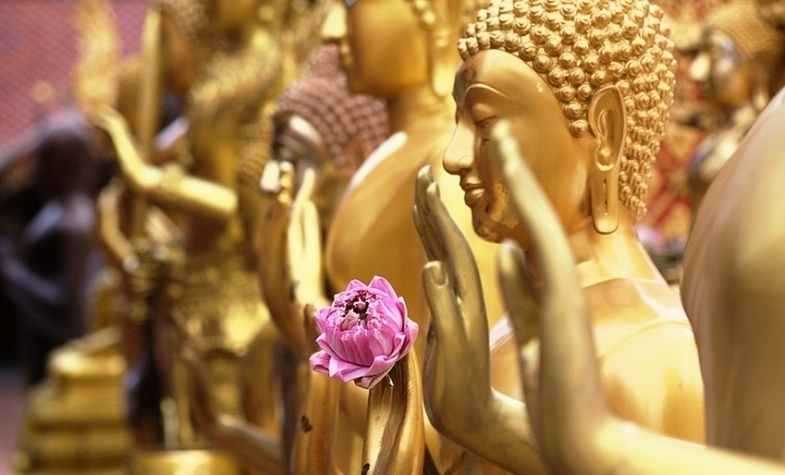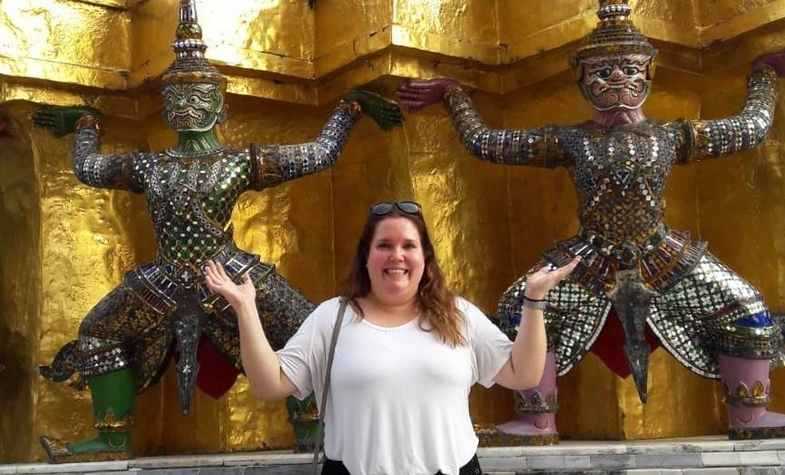The culture of Thailand incorporates cultural beliefs and characteristics indigenous to the area known as modern-day Thailand coupled with much influence from ancient India, China, Cambodia, along with the neighboring pre-historic cultures of Southeast Asia. It is influenced primarily by Animism, Hinduism, Buddhism, as well as by later migrations from China, and southern India. If you're curious about arts and literature in Thailand, here are what you need to know!
Arts in Thailand
Thai visual art has a rich history rooted in Buddhist traditions. The various styles of Thai Buddha images, which have evolved over time, are distinctive and have become synonymous with Thai art. The architecture and art of Thai temples have been influenced by various sources, including Khmer architecture. In contemporary Thai art, modern techniques are often combined with traditional Thai elements to create unique pieces.
The Sukhothai period, which spanned from 1248 to 1348, is considered the Golden Age of Thai art and development. During this period, religious sculptures lacked anatomical detail, but by the Ayutthaya period (1350-1767), images became more elaborate. Artistic development during these two eras was primarily confined to religious and royal spheres, with significant investments of money and attention given to religious art.
However, artistic periods in Thailand date back even earlier, including the Lanna Kingdom (where Chiang Mai is located) and the Dvaravati era dating from the ninth century. Many exquisite pieces from these periods are preserved in the National Museum in Bangkok. Thailand's music scene is equally diverse and includes classical and folk music traditions, such as piphat and mor lam, respectively, as well as string or pop music.

In the past, sculpture in Thailand was primarily focused on casting Buddha images, which they perfected in technique and artistic expression. Some ancient specimens of this art can be compared favorably with classical arts of other nations. On the other hand, painting was mostly confined to mural tempera painting within temple buildings, with a more conventionalized style that achieved some artistic manifestations to a high degree but could not compare to sculpture in terms of artistic achievement.
In contemporary times, Thai architecture, sculpture, and painting have largely adopted Western styles. However, preserving classical arts as a source of inspiration for evolving modern arts while maintaining Thai cultural identity within a broader culture remains a challenge.
Thai music is similar to that of China, with a diatonic scale characteristic of its own. While the theoretical conception of Buddhism does not tolerate music, it is allowed in certain religious ceremonies to promote religious emotions and on festive occasions.

Literature in Thailand
Thai literature has historically been heavily influenced by Indian culture, with the national epic being a Thai version of the Ramayana called the Ramakien. Unfortunately, some versions of the epic were lost in the destruction of Ayutthaya in 1767. Three versions currently exist, with one prepared under the supervision (and partly written by) King Rama I, and his son, Rama II, rewriting some parts for khon drama. The main differences from the original include an extended role for the monkey god Hanuman and the addition of a happy ending.
While there is no tradition of spoken drama in Thailand, it is filled by Thai dance, which is divided into three categories: khon, lakhon, and likay - with khon being the most elaborate and likay being the most popular. Nang drama, a form of shadow play, is found in the south. Sunthorn Phu is the most important poet in Thai literature, best known for his romantic adventure story Phra Aphai Mani and nine travel pieces called Nirats.
In the 20th century, Thai writers tended to produce light fiction for a growing market, but individual writers are now being recognized for producing more serious works, including Kukrit Pramoj, Kulap Saipradit (pen name Siburapha), Botan, and others. Some of their works have been translated into English. The Isan region of Thailand has produced two notable sociocritical writers in Khamsing Srinawk and Pira Sudham, with the latter writing in English.
Thailand has also had a wealth of expatriate writers in the 20th century, with the Bangkok Writers Group currently publishing fiction by Indian author G.Y. Gopinath, the fabulist A.D. Thompson, as well as non-fiction by Gary Dale Cearley.
Thailand is a country rich in culture and history. When you come to Thailand, you will be immersed in ancient and fascinating stories. So come and explore this beautiful country!
Related tours for you:
***
Travel Authentic Asia Company is your best choice for discovering the beauty of Southeast Asia. Our experienced and knowledgeable travel advisors are committed to helping you create a tailor-made tour and extraordinary experiences in this majestic region.
If you're looking for an authentic cultural experience, do not hesitate to contact Travel Authentic Asia to choose a Thailand tour, Southeast Asia tour package or to customize your own style tour to South East Asia.

